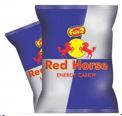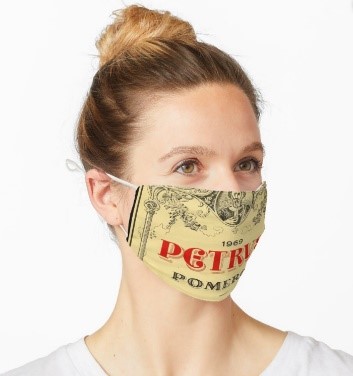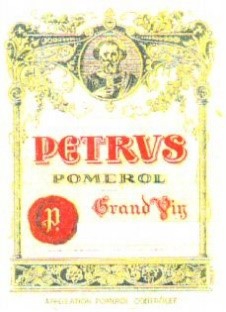The Court of Justice of the European Union (CJEU) issued a preliminary ruling on 15 April 2021 concerning
the interpretation of EU Regulation 1151/2012 on quality schemes for agricultural products and foodstuffs.
The decision issued in case C-53/20 pertains to the standing requirements for opposing a substantial
amendment of the product specification of a protected geographical indication (PGI).
Regulation 1151/2012 updates and merges the rules previously contained in Regulations 509/2006 on
traditional specialties guaranteed (TSG) and 510/2006 on protected designations of origin (PDO) and
geographical indications (PGI), repealing the two previous regulations.
The case at hand originates from an application to amend the product specification of a PGI, "Spreewälder
Gurken" (gherkins from the Spree Forest, Germany), submitted by Spreewaldverein eV, an association of
gherkin producers. The application to amend the specification was filed before the Deutsches Patent und
Markenamt (German Patent and Trade Mark Office, DPM).
Hengstenberg GmbH & Co KG (Hengstenberg), a company operating outside the production area of the PGI
in question, sought to act as an interested party to the application for amendment of the specification,
because it marketed Spreewälder Gurken PGI products. As such, Hengstenberg filed an opposition against
the application before the DPM, which rejected the opposition.
Hengstenberg appealed the decision of the DPM to the Bundespatentgericht (Federal Patent Court), which
dismissed the appeal, finding that Hengstenberg held no "legitimate interest" as required by Regulation
1151/2012 and German national law to oppose the application in question. That notion is central to the
opposition procedure, as only a natural or legal person with a “legitimate interest” can lodge a notice of
opposition against a non-minor amendment to a product specification.
The Bundespatentgericht (Federal Patent Court) concluded, in particular, that only producers established in
the geographical area of origin are potentially affected by a possible reduction in the value of a PGI, or
damage to the reputation of the product concerned, as a result of an amendment to the relevant
specification.
This decision was then appealed before the Bundesgerichtshof (Federal Court of Justice) which, considering
that the correct definition of the notion of "legitimate interest" was fundamental to the resolution of the
dispute, stayed the proceedings and referred the case to the CJEU for a preliminary ruling pursuant to Article
267 TFEU.
The question before the CJEU therefore related to the definition of the concept of "legitimate interest", under
Article 49(3), first paragraph[1], and Article 49(4), second paragraph[2], of Regulation 1151/2012, read in
conjunction with the first paragraph of Article 53(2) thereof[3].
In particular, the Bundesgerichtshof asked the Court of Justice whether, in the context of applications for
non-minor amendments to the product specification of a product benefiting from a PGI, the "legitimate
interest" should be interpreted as referring to any person or entity thatsuffers an economic prejudice - actual
or potential, but not entirely implausible - as a result of the requested amendments.
First of all, the CJEU recalled that by virtue of the express reference set forth in Article 53(2), first paragraph,
applications for non-minor amendments to the specification of a product benefiting from a PGI are subject
to the same procedure as that applicable to the registration of a new PGI. Thus, the interpretation of the
concept of "legitimate interest", which is not defined in the regulation in question, must be identical for both
situations.
The Court then noted that the rules in question all provide that “any natural or legal person” may exercise
the right to lodge an opposition and subsequently appeal the decision. Thus, based on a literal interpretation,
despite the lack of a definition of “legitimate interest”, there are indications that it should be interpreted
broadly.
The CJEU then noted that even starting from the division of competences that the regulation establishes
between the Union and the Member States - which assess applications for registration and oppositions,
before submitting a request to the Commission for the registration of protected names - a broad
interpretation is preferable, offering the opportunity to as many interested parties as possible to object to
significant amendments to the specification. In particular, the Court recalled that one of the grounds for
opposition involves the potential to jeopardize the existence of a prior name or trademark or the existence
of products legally on the market for at least five years before the date of publication of the registered name
and specification.
The objectives pursued by the regulation - i.e. the creation of quality schemes that contribute to making the
quality of products and the methods of production of the same factors that impart a competitive advantage,
as well as at the same time avoiding an anti-competitive use of the PGI, PDO and TSG regimes - also lead to
the same conclusion.
Finally, the Court emphasised that it is for the national court to assess, on a case by case basis, whether the
“legitimate interest” invoked by the party lodging the opposition is not improbable or hypothetical, in order
to balance the need to ensure those with a real interest have the right to oppose non-minor amendments to
the product specification with that of avoiding pernicious challenges to changes affecting the specifications.
Therefore, with this ruling, the CJEU confirmed an expansive interpretation of the legal standing necessary
for a party to file an opposition to substantial changes to a PGI product specification, which is protective of
the interests of all the stakeholders involved, including those operators that fall outside of the production
area of the PGI itself.
Source: Studio Legale Jacobacci & Associati
______________________________
1 “As part of the scrutiny referred to in the second subparagraph of paragraph 2 of this Article, the Member State shall initiate a
national opposition procedure that ensures adequate publication of the application and that provides for a reasonable period within
which any natural or legal person having a legitimate interest and established or resident on its territory may lodge an opposition to
the application”.
2 “The Member State shall ensure that its favourable decision is made public and that any natural or legal person having a legitimate
interest has an opportunity to appeal.”.
3 “Where the amendment involves one or more amendments to the specification that are not minor, the amendment application shall
follow the procedure laid down in Articles 49 to 52.”




















